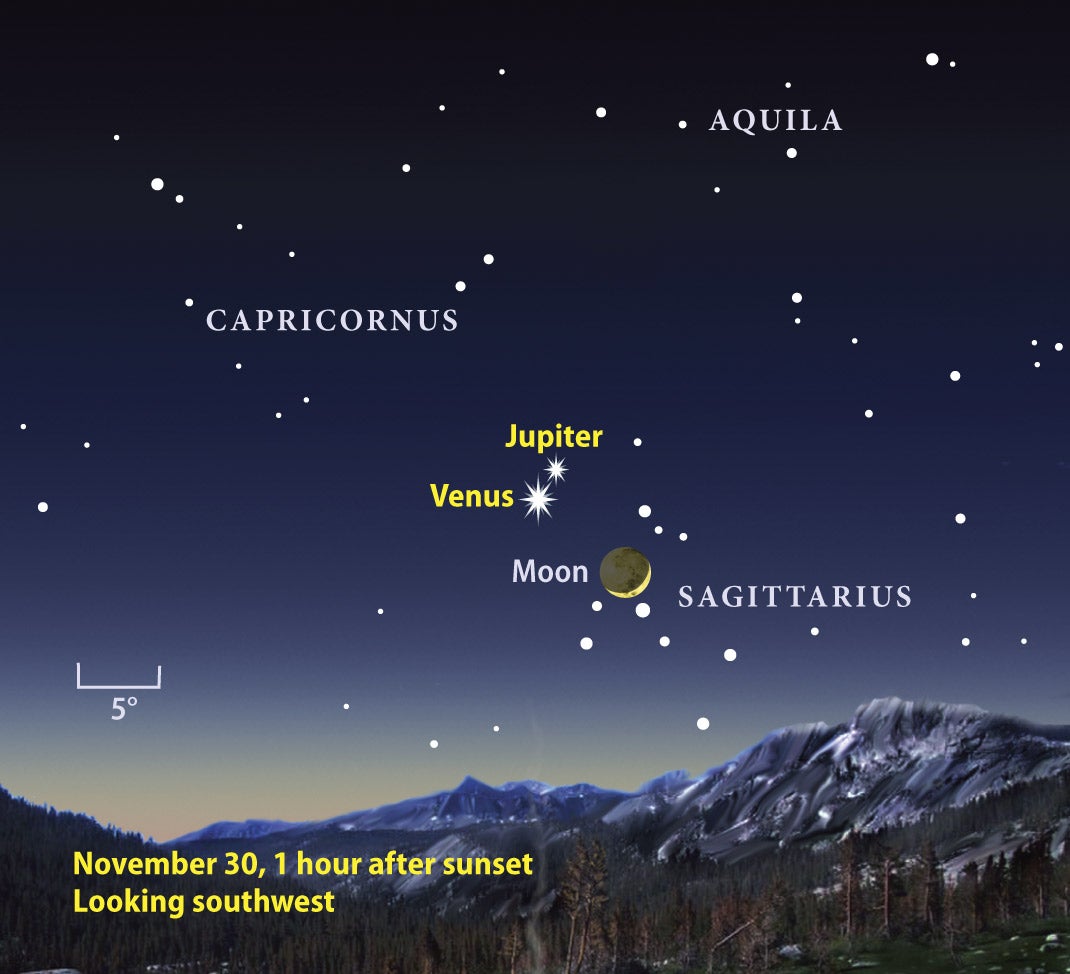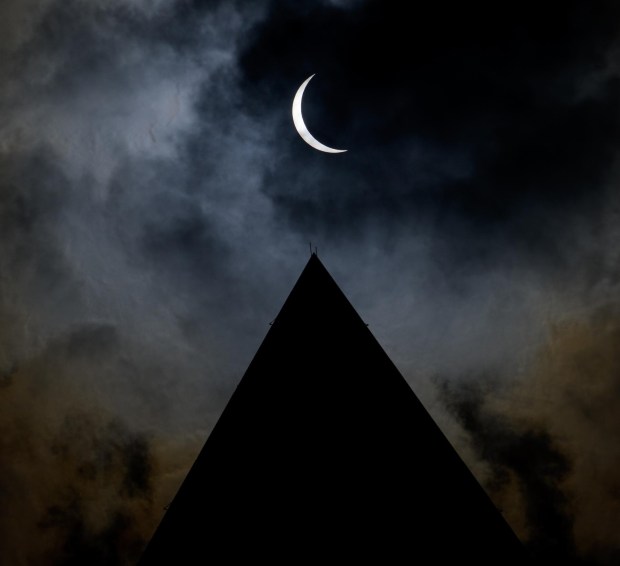
The gap between the two planets has been closing all month. In early November, Jupiter appeared some 30° to Venus’ upper left. By November 30, the separation drops to just 2° — four times the Moon’s apparent diameter. That same evening, a waxing crescent Moon lies 8° to Venus’ lower right. One night later, the Moon hangs just 2.5° to Venus’ upper left. The Moon then appears 15 percent lit, although the “dark” side should glow faintly from earthshine — sunlight that reflects off Earth, reaches the Moon, and then bounces back to us.
Such close encounters between Venus and Jupiter happen fairly often. Frequently, however, these conjunctions occur close enough to the Sun that the planets appear in a bright sky. The two last met in February’s predawn sky, although their altitude then was less than half of what it is now. Viewers will have to wait until March 2012 for Venus and Jupiter to have another nice evening conjunction.
Tools to help you observe Venus and Jupiter
StarDome
Astronomy.com’s interactive star chart, StarDome, displays an accurate map of your sky. It’ll help you locate this spectacle. Astronomy magazine subscribers have access to a slew of cool functions with StarDome PLUS.
Podcast: Venus and Jupiter
Each week, Senior Editor Michael Bakich highlights three targets visible in the night sky. One object you can see without optical aid, one you can see with a small telescope, and one deep-sky object you can see with an 8-inch or larger telescope. In this week’s episode, he highlights Venus and Jupiter and explains how to enjoy this Thanksgiving sky feast. Listen to podcast.
WAUKESHA, Wis. — Keep your eyes on the early evening sky for the next week, and you will witness the most dramatic planetary alignment of 2008. The southwestern sky provides the stage as Venus and Jupiter — the two brightest points of light in the sky — begin their celestial dance. The two appear closest November 30, but it’s worth watching for several days on either side as they make a beeline for each other and then back off.
Throughout this period, Venus appears 7 times brighter than Jupiter. Even so, Jupiter easily outshines every other starlike object in the sky. To add to the drama, a slender crescent Moon passes the planet pair after sunset December 1. “Although all three objects shine bright enough to see just 30 minutes after sunset, the scene grows more spectacular as twilight deepens,” said Astronomy magazine Senior Editor Richard Talcott. The trio doesn’t set until 3 hours after the Sun.
Astronomy‘s mission:
Astronomy promotes the science and hobby of astronomy through high-quality publications that engage, inform, entertain, and inspire.
More resources from Astronomy.com:
- Astronomy news
- Astronomy basics
- Glossary of astronomical terms
- Return to Astronomy “For the media” page









